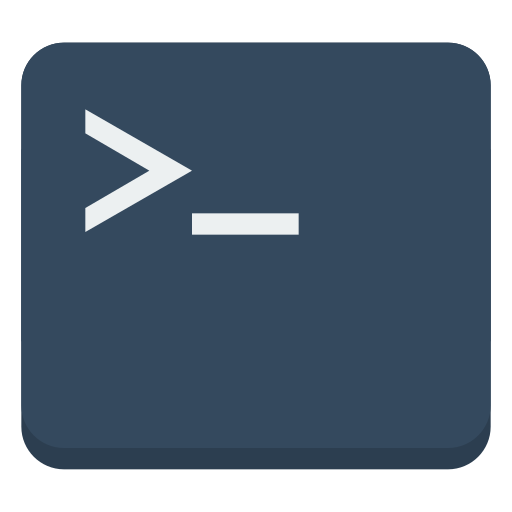
Live Chat

Domain Scan

(empty)

Login
How to Monitor and Optimize Website Resource Usage Efficiently
(01-aug-2024)

In the digital landscape, where website performance and user experience are paramount, effectively managing server resource usage becomes a critical task for website owners and administrators. Understanding key components like CPU speed, I/O (Input/Output), IOPS (Input/Output Operations Per Second), NPROC (number of processes), and entry processes is essential for optimizing server efficiency and ensuring a smooth, reliable experience for users. This blog explores the complexities of resource usage on servers, highlighting its impact on website performance, security, and scalability.
What is Resource Usage?
Resource usage on a hosting package refers to the allocation and consumption of server resources by the websites hosted on that package. Resource usage monitoring and optimizing involves managing various key components, including CPU speed, I/O (Input/Output), IOPS (Input/Output Operations Per Second), NPROC (number of processes), and entry processes. Here's a brief explanation of each:1. CPU Speed:
In shared hosting, CPU speed refers to the processing power allocated to handle tasks for multiple websites within the same hosting package. Since the CPU resources are shared among all hosted sites in that package, the performance of each website can be influenced by the CPU usage of others. Higher CPU speed allows for faster processing of tasks, improving website loading times and user experience. Efficient CPU management ensures that websites can perform optimally under varying loads.
2. I/O (Input/Output):
I/O refers to the communication between a server's hardware components (like the CPU and disk drives) and external devices (such as network interfaces). In the context of servers, I/O performance often concerns the speed and efficiency of data transfer between the storage system and the memory or processor. Efficient I/O operations are crucial for handling large data volumes and ensuring fast data access.
3. IOPS (Input/Output Operations Per Second):
IOPS is a measure of how many input/output operations a storage device can handle per second. It is a key metric for assessing the performance of storage systems, especially in databases and applications requiring rapid data access. Higher IOPS indicate better performance, allowing the server to handle more read and write operations in a given time frame.
4. NPROC (Number of Processes):
The "NPROC" limit defines the maximum number of processes that a user or application can run simultaneously on a server. This limit helps prevent a single user or application from monopolizing system resources, which could lead to performance degradation for other users or services.
5. Entry Processes:
Entry processes refer to the number of PHP scripts or similar server-side scripts that can run concurrently on a hosting server. This is particularly relevant in shared hosting environments where multiple users share the same server resources. The entry process limit helps ensure that no single user can overburden the server, thus maintaining fair usage and stability.
Benefits of Effective Resource Usage Management
- Improved Website Performance: Efficient resource management ensures that your website loads quickly and runs smoothly, providing a better experience for visitors.
- Increased Reliability: Proper management helps prevent server overloads, reducing the likelihood of downtime and ensuring your website remains accessible.
- Better Security: Monitoring resource usage can help detect unusual activities or potential security threats, allowing for quicker responses to mitigate risks.
- Enhanced Scalability: Understanding your resource usage patterns makes it easier to scale your website as it grows, ensuring seamless upgrades when needed.
- Improved SEO: A well-performing website with fast loading times can positively impact your search engine rankings, driving more traffic to your site.
- User Satisfaction: A stable and responsive website leads to a better user experience, encouraging visitors to stay longer and return in the future.
- Easier Troubleshooting: Monitoring resource usage allows for quicker identification and resolution of issues, minimizing disruptions to your website.
Steps to Check the Resource Usage from cPanel
- Log in to cPanel
- Log in to your Register.lk account and go to Services > My Services.
- Click on the green 'Active' button in front of the relevant hosting package.
- Click on "Login to cPanel" on the panel on the left. Alternatively, you can type "yourdomain.com/cpanel" in your browser to log in to your cPanel directly using your cPanel username and password.
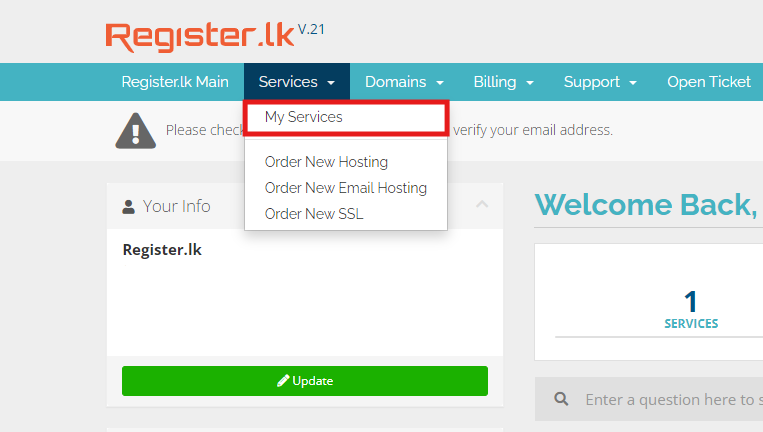
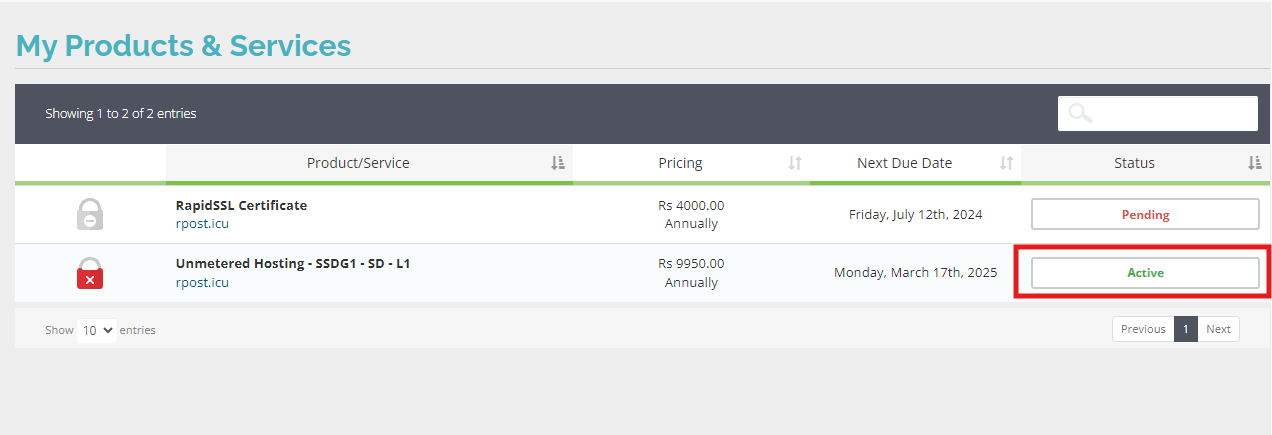
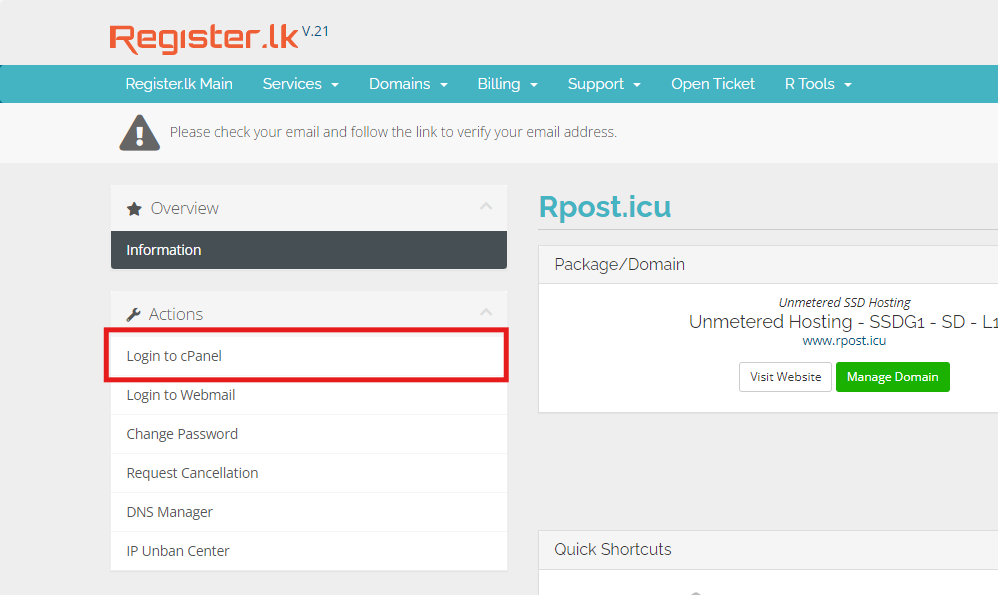
- Navigate to Resource Usage
- In cPanel, go to 'Resource Usage' in the 'Metrics' category.
- Once you navigate, you can check the resource usage of your hosting package.
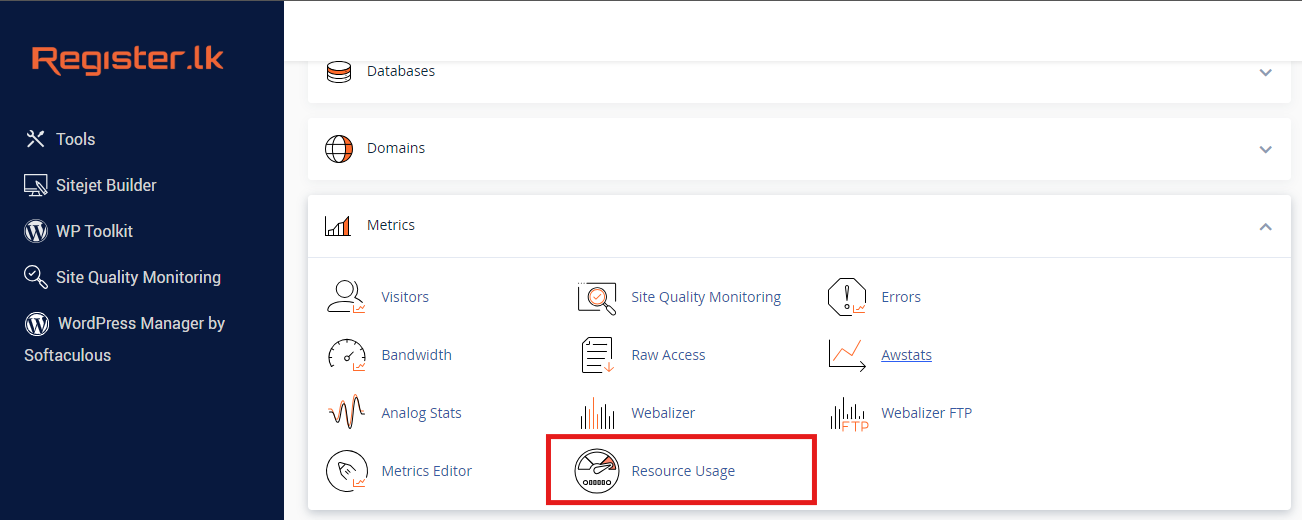
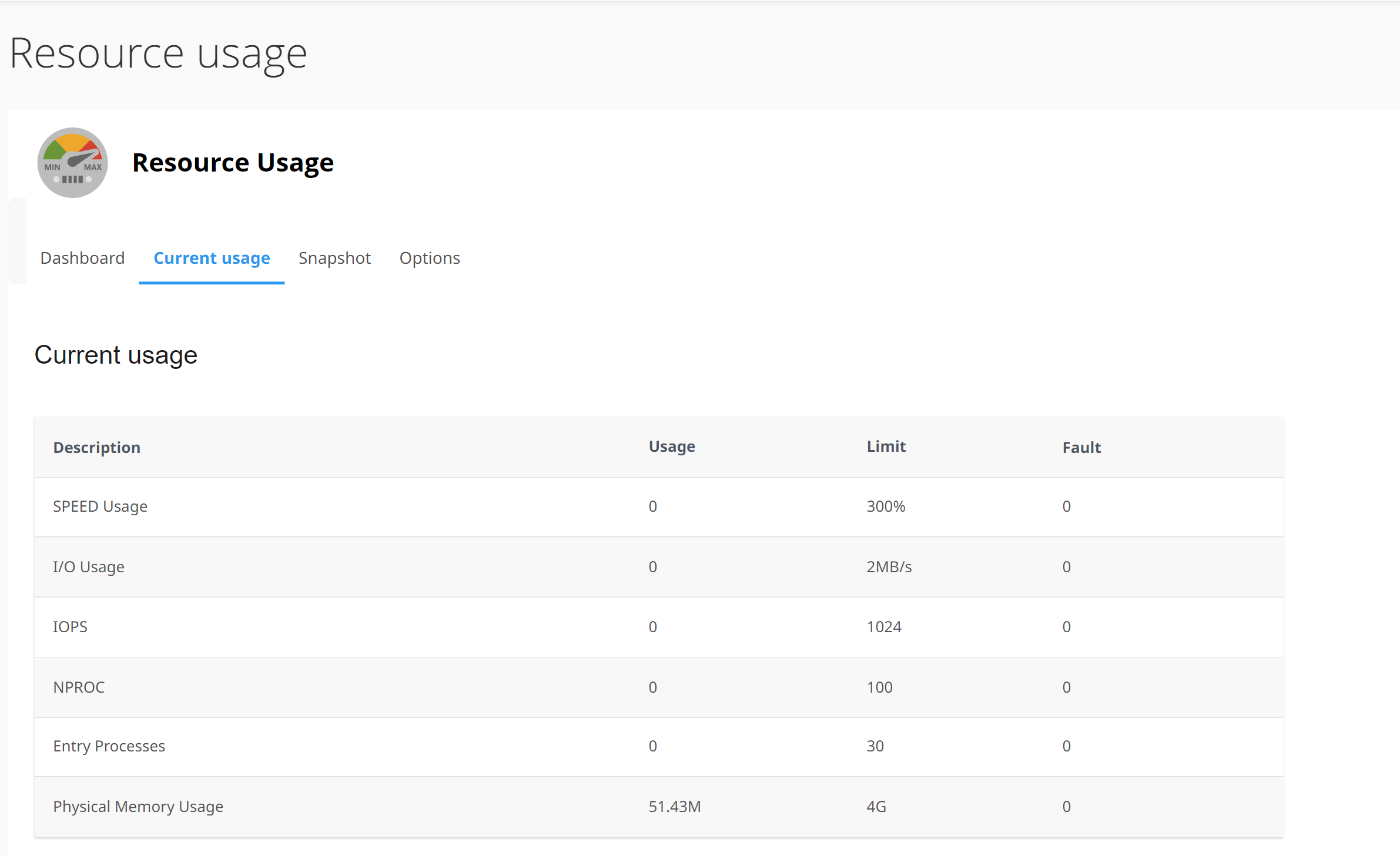
Managing and Preventing Resource Usage Overages
| Reason | Type of Resource Affected | Prevention |
|---|---|---|
| Large File Transfers | CPU Speed, I/O, IOPS | Compress files, use asynchronous processes, use a CDN |
| Inefficient Code | CPU Speed | Regularly review and optimize scripts |
| Excessive Plugins | CPU Speed | Use only necessary plugins and keep them updated |
| Unoptimized Media | CPU Speed | Compress and optimize images |
| Lack of Caching | CPU Speed, I/O | Implement server-side and browser caching |
| Malware or Security Breaches | CPU Speed | Regular security scans, implement security measures |
| Frequent File Access | I/O | Implement caching |
| Backup Operations | I/O, IOPS | Schedule backups during off-peak hours, use incremental backups |
| Log File Activity | I/O, IOPS | Rotate and compress logs efficiently |
| Poorly Written Scripts | NPROC | Ensure efficient termination of processes |
| Frequent Cron Jobs | NPROC | Schedule cron jobs during off-peak times |
| Background Tasks | NPROC | Optimize scripts |
| Bot Traffic | NPROC | Implement measures to block unwanted bot traffic |
| Persistent Connections | Entry Processes | Implement server-side and browser caching |
| Heavy Applications | Entry Processes | Review and optimize applications and plugins |
| Slow Response Times | Entry Processes | Ensure fast response times by optimizing code |
Conclusion
Efficiently monitoring and optimizing website resource usage is crucial for maintaining high performance, reliability, and security. By regularly checking resource usage through cPanel and implementing strategies such as code and image optimization, using CDNs, caching, and maintaining a minimal and updated set of plugins, website owners can enhance website speed and user experience. Effective resource management also helps in detecting and mitigating security threats, improving SEO rankings, and supporting scalability. By adhering to these best practices, you can ensure your website runs smoothly, providing a seamless and satisfying experience for visitors.Continuous optimization supports both performance and security, enhancing overall website efficiency. Implement these strategies to ensure your website remains fast, secure, and user-friendly.
 Written by: Register.lk Support Hero - Eranga
Written by: Register.lk Support Hero - Eranga


